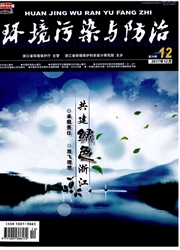

 中文摘要:
中文摘要:
人工浮床作为一种新型的生态修复技术,主要依靠植物、微生物和水生动物的共同作用实现对水体的净化,具有不占用土地、不消耗能源、成本低、管理简单等优点,在地表水修复和污水净化中得到了越来越多的应用。然而,受植物生长速度和温度的影响,其在应用中仍存在净化能力差、适用范围有限等缺陷。优势植物筛选与植物刈割、微生物强化技术和水生动物强化法等途径可以在一定程度上解决这些问题。人工浮床中植物、微生物和水生动物在污染物去除中的耦合过程、微生物活性及影响因素和人工浮床的设计、构建及日常管理标准的制定等研究尚不深入,是限制人工浮床技术进一步推广的主要因素,也是未来研究的重点和难点。
 英文摘要:
英文摘要:
As a new ecological rehabilitation technology, artificial floating beds have been successfully used in the restoration of eutrophic water bodies. With the advantage of land and energy saving, low cost and simple manage- ment, the technology has gained more and more applications in contaminated surface water remediation and sewage treatment. Artificial floating beds remove contaminants from water by the combined action of macrophytes, microbes and aquatic animals. Limited by the growth speed of plants, the purification capacity of the technology is poor. And there are some other problems in the application of the technology, for example, the limited application conditions. By screening excellent plants, cutting plants, combining it with biological contact oxidation and immobilized nitrogen cyc- ling bacteria, augmenting aquatic animals, the purification ability of the floating beds can be improved. The coupling of plants, microbes and aquatic animals, the biofilm characteristics of the systerm and the formulation of relevant standard have not been studied in detail, which are the emphasis and direction for future studies.
 同期刊论文项目
同期刊论文项目
 同项目期刊论文
同项目期刊论文
 Accumulation of Lead, Zinc, and Copper in Scalp Hair of Residents in a Long-Term Irrigation Area Dow
Accumulation of Lead, Zinc, and Copper in Scalp Hair of Residents in a Long-Term Irrigation Area Dow Nutrient removal in different overlying water layers and their variation in pore water of drainage d
Nutrient removal in different overlying water layers and their variation in pore water of drainage d Vertical distribution and temporal variation of nitrogen, phosphorous and carbon in ditch sediment i
Vertical distribution and temporal variation of nitrogen, phosphorous and carbon in ditch sediment i Removal of nitrogen and COD in horizontal subsurface flow constructed wetlands under different influ
Removal of nitrogen and COD in horizontal subsurface flow constructed wetlands under different influ 期刊信息
期刊信息
